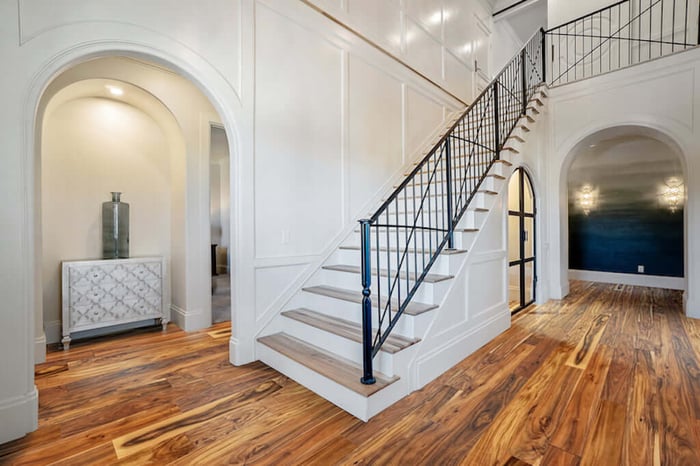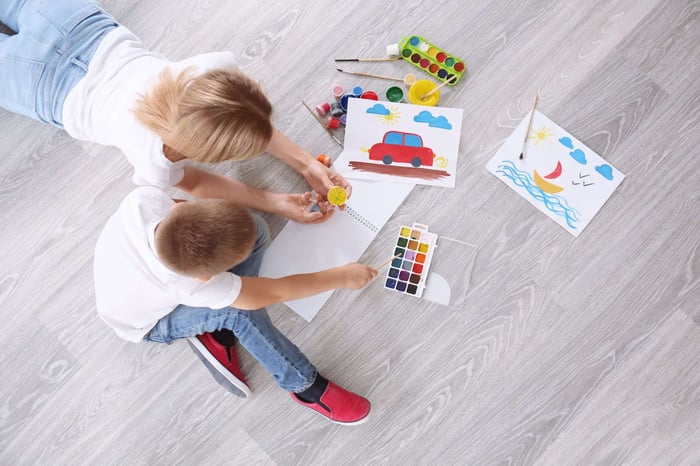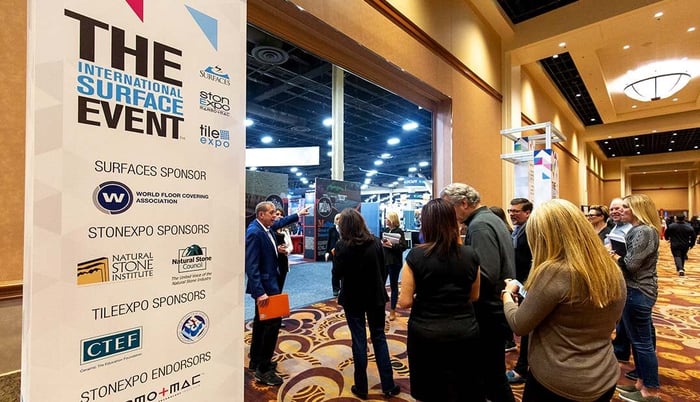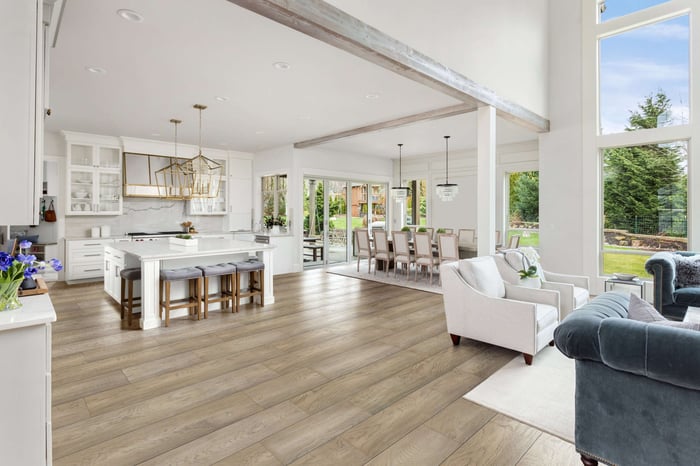
Remarkable Trends in Wood Flooring Over the Years
Home interior trends are ever-changing, especially when it comes to wood flooring. As consumers embrace new materials, manufacturing techniques, and installation processes, the demand for specific flooring styles will change. However, history has a habit of repeating itself, and the evolution of wood flooring is fascinating.
Let’s take a look at the top trends in wood flooring over the last few decades. Our flooring experts here at Harper Floors strive to provide detailed and relevant product knowledge to help our customers narrow down the right flooring material for their unique projects.
The Evolution of Hardwood Flooring

1960s: Carpeting Reigns Supreme
Although hardwood floors have a reputation for being a traditional flooring material spanning generations, it wasn't widespread until after the 1960s. At the time, hardwood floors were deemed unsuitable for the average household that couldn’t afford regular cleaning and the occasional buffing and waxing needed to maintain the floors.
Instead of hardwood floors, homeowners embraced a more affordable option that required less to maintain: wall-to-wall carpeting. Homeowners installed carpets in their living rooms, bedrooms, and other various living spaces, often to cover their hardwood floors.
The carpet industry introduced affordable wall-to-wall carpeting to consumers in 1968. However, this flooring option first appeared on the market in the 1930s as hand-sewn pieces to cover an entire room’s floor. Unlike the new, low-cost carpeting of the late 1960s, the earlier versions of wall-to-wall carpet installations were a high-end luxury that emphasized comfort and low maintenance.
Before 1968, only people with disposable income could afford wall-to-wall carpeting because the seams were hand-sewn. However, the carpeting industry soon after introduced a gluing system that made carpets easier to install and more affordable, leaving hardwood floors trailing in popularity.
1970s: Traditional, Glossy Hardwood
Carpeting remained popular through the 1970s. In fact, the preferred style of the decade was fluffy shag carpeting with a hile pile reaching up to four inches. Harvest gold and avocado were the top color choices for shag carpets, and people installed them in almost all areas of their homes, including the kitchens and bathrooms.
Despite the popularity of shag carpets, select homeowners looking for a more luxurious aesthetic would install hardwood flooring in their houses. Early adopters of hardwood embraced a simplistic flooring aesthetic with a high shine. Most color options for hardwood leaned toward blond-colored wood and red oak.
1980s: Hardwood Makes a Comeback

By the 1980s, the thick, brightly colored shag carpets began losing its popularity, quickly becoming an outdated look. Homeowners began to prefer a more classic, cleaner look to their homes, which is when prefinished wood planks without designs or patterns became the go-to choice for flooring. With more people desiring a simple aesthetic, hardwood flooring suppliers began to see a comeback from the flooring industry’s carpeting craze of the previous 15-plus years.
1990s: Engineered Hardwood Gains Popularity
The 1990s saw trends in wood flooring shift from natural brown and red tones and glossy finishes, to contemporary grey, beige, and matte finished engineered hardwood. Homeowners wanted bigger, wider, and longer planks, particularly homeowners in the South with large, open living spaces.
The problem with large floorboards in solid hardwood is that they develop seasonal gaps due to changes in a home's humidity and temperatures. The wood would shrink in dry air and expand during humid summers. Engineered wood solved this problem with five-inch wide floorboards and layered wood design that didn't shift as much as traditional boards.
Manufacturers developed engineered wood in the 1970 and it quickly gained traction through the 1990s, thanks to an array of new colors and wood types.
2000s: Distressed and Organic are the Top Wood Trends
Trends in wood flooring shifted from engineered wood to organic and distressed wood flooring at the turn of the millennium. Distressed styles with dark, earthy tones and color palettes that were natural and effortless gave homes a cozier feel over the traditional, “shiny” floors of the previous decade.
Interior designers and homeowners also loved the hand-scraped look and considered it "the next big thing" in home design. The innovation of scraped looks spread to other flooring materials. For example, heathered tweeds in carpeting lessened the shine of the flooring's fibers.
2010s: Wood Color Trends Develop
Not only did the industry see shifts in surface type and finish, but color also began to shift from dark browns, deep reds, and red-orange tones, to greys, beiges, and “greige.”
Along with trending colors, the boom of social media and home improvement channels like HGTV are hugely responsible for the shift in the interior design trends, including those in flooring. Hard surface flooring became the material of choice for first-floor living spaces while carpeting was used upstairs to create a sound barrier and provide a soft walking surface in bedrooms and hallways.
2021 and Beyond: Dark Matte Finishes and New Colors
Today, wood flooring is one of the most popular materials in homes and businesses, but the style has evolved back to classic trends with a contemporary twist.

In regards to construction type, engineered hardwood flooring with wide planks is the most coveted type of hardwood in newer homes. Broad wooden planks ranging from 6 to 10 inches wide with matte finishes create an authentic, organic, yet elegant and luxurious feel in a home.
When it comes to color and tone, grey tones remain ever so popular today. Interior design experts expect the hues to move toward gold-accented or silvery grays. ”Greige,” a medium blend of grey and beige tones, is another trend that looks like it is here to stay.
Embrace New Trends in Wood Flooring with Harper Floors
Harper Floors is a leading flooring distributor specializing in many wood floor types, including solid hardwood, engineered hardwood and vinyl flooring. Some of our best sellers include various species of exotic solid hardwood, european oak engineered hardwood, and contemporary vinyl flooring options, like our light grey Knox vinyl flooring style. We offer honest factory direct pricing for superior products.
By continuing to delve into the latest research and stay ahead of trends, we can expand our selection based on past learnings and provide only the top flooring products to our customers. Learn more about hardwood flooring trends and find information such as the difference between European and American oak or more trends in wood flooring on our blog.
If you're ready to explore our impressive inventory of quality flooring materials, contact Harper Floors at 888-807-2704. You can also request a quote by completing our convenient online form.



